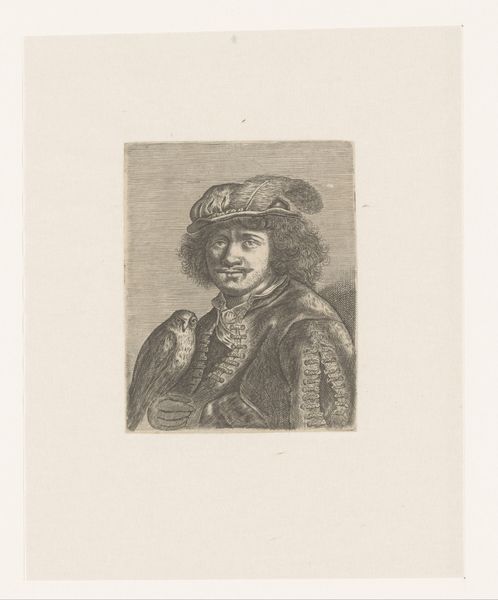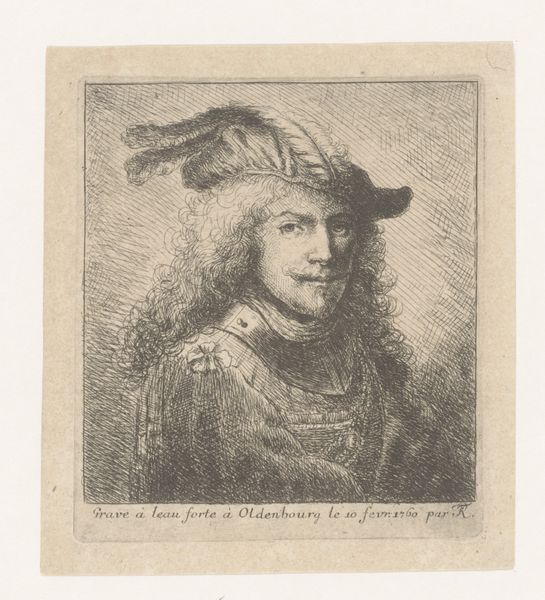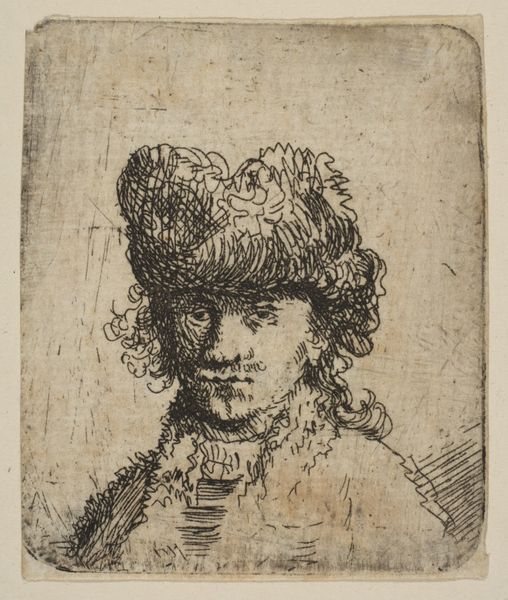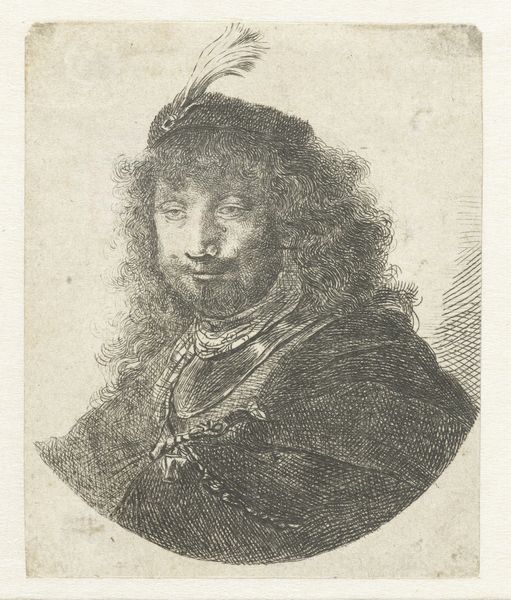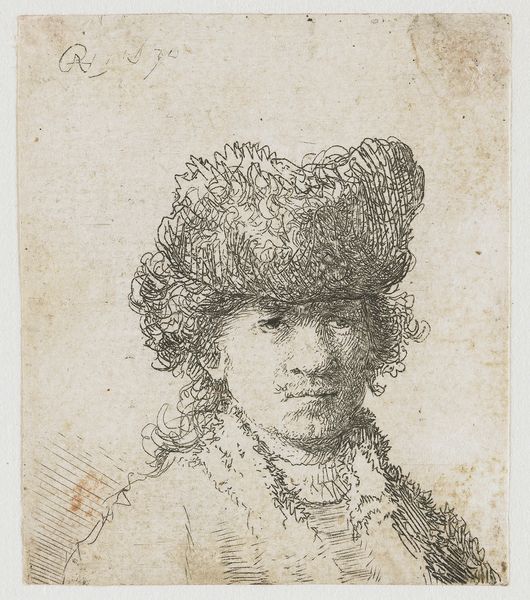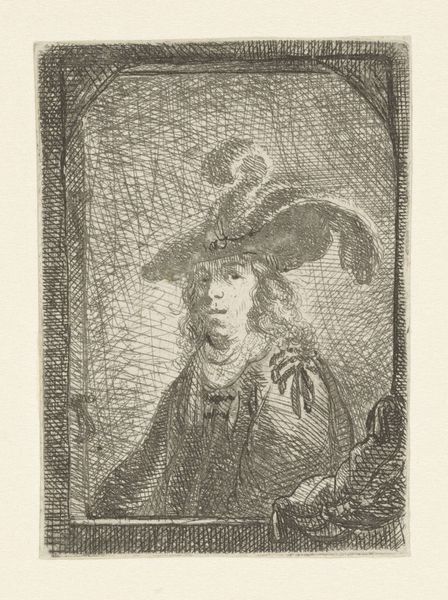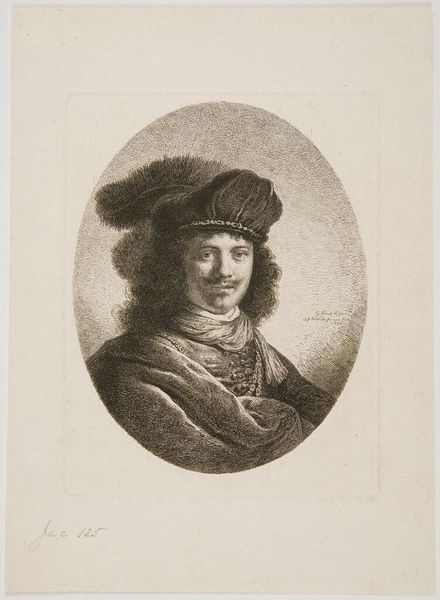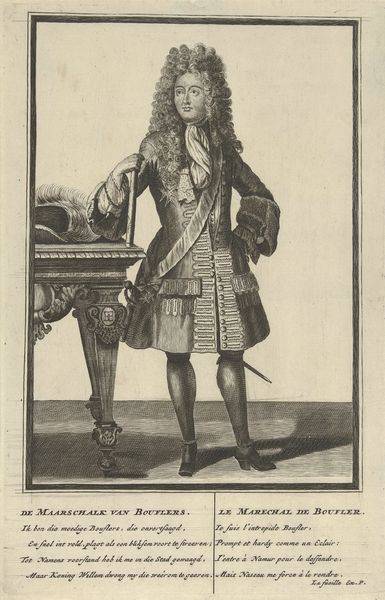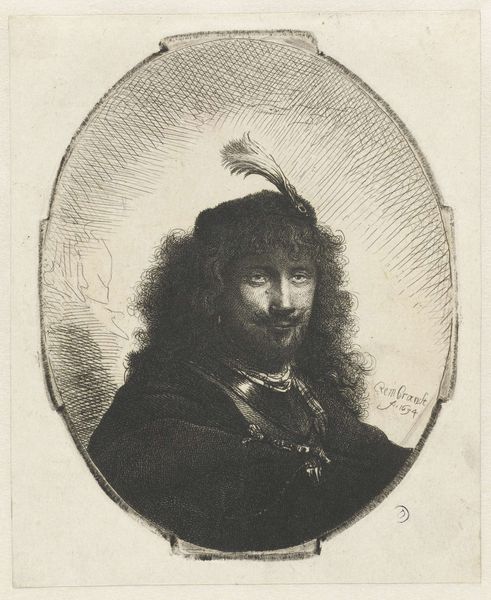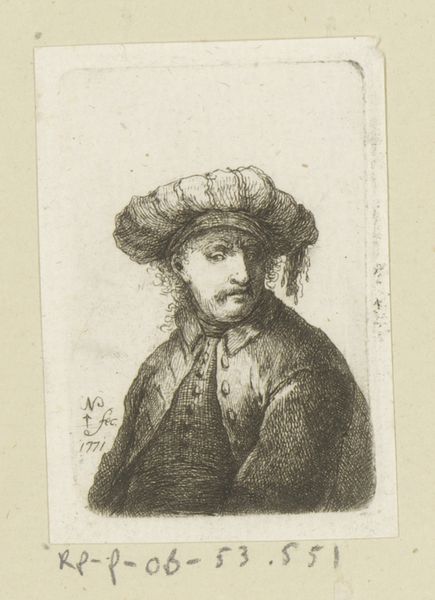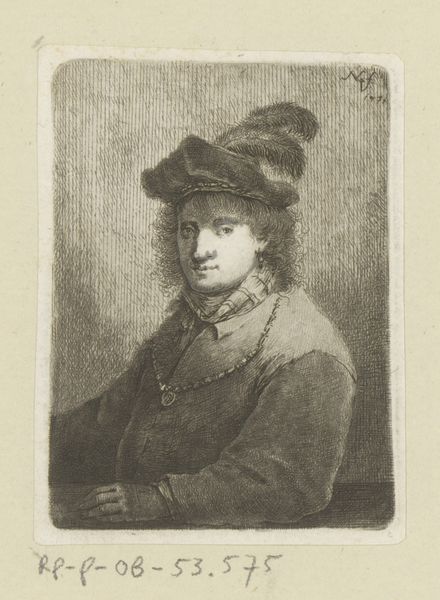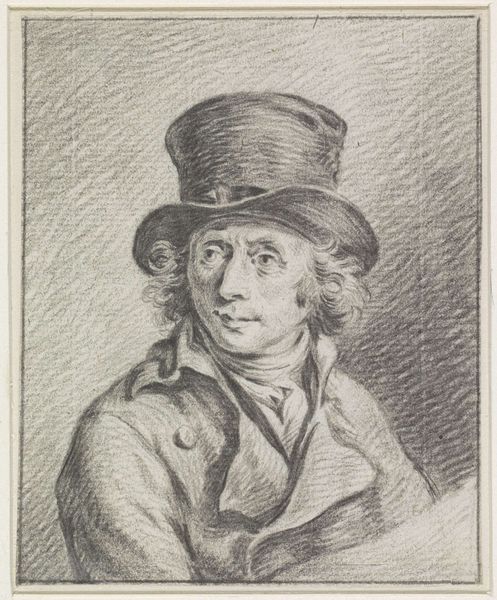
Plate 2: head of a man with a moustache and fur cap facing left, an oval composition, from 'Various heads and figures' (Diverses têtes et figures) 1650
0:00
0:00
drawing, print, engraving
#
portrait
#
drawing
#
baroque
# print
#
pencil sketch
#
figuration
#
line
#
engraving
Dimensions: Sheet: 3 1/4 x 2 1/2 in. (8.3 x 6.4 cm)
Copyright: Public Domain
Curator: Look at this fine gentleman, seemingly plucked from a different era. Editor: Yes, he definitely evokes a sense of historical gravitas, and yet there is a lightness, an almost whimsical quality, in the sketchiness of the lines. Curator: Indeed. This is "Plate 2: head of a man with a moustache and fur cap facing left," part of a series titled 'Various heads and figures' by Stefano della Bella. He executed it around 1650. The work, an engraving, currently resides at The Met. Editor: 1650 you say? Well that magnificent fur cap places him firmly within a certain social class. One wonders about the political climate in which della Bella produced such a portrait. Fur was a clear indication of prosperity and rank at the time. It’s carefully rendered here and contrasts with the looser treatment of his jacket, as though emphasizing his societal position. Curator: Note also the oval framing—not just as a border but also serving as a symbolic device. It is reminiscent of a cameo, which emphasizes that this isn’t merely a head, but also something precious to be examined with admiration. His piercing stare, even in a two dimensional depiction, is compelling. It engages with the audience beyond the passage of centuries, inviting us to read his cultural coding anew. Editor: I agree. His expression is incredibly compelling. Though seemingly stoic, there’s an almost weary sensitivity about him, that's rendered skillfully in the etching. And that’s the fascinating thing about portraiture isn't it? While ostensibly objective records of a sitter, these portraits always convey the relationship the artist had with his model or indeed, the politics of representation itself. Who gets represented, and how? Curator: That’s well observed. I would add, also consider how easily images like these—prints from 'Various heads and figures'—would have been circulated at the time, creating a wider visual culture beyond court circles and grand homes. This engraving gives visual vocabulary of status. Editor: Yes, making available to many something formerly exclusive. I leave considering what visual vocabularies the symbols of wealth will look like centuries from now. Curator: An intriguing thought. It encourages further contemplation on not just this sitter, but the entire role imagery plays in creating societal hierarchies.
Comments
No comments
Be the first to comment and join the conversation on the ultimate creative platform.
